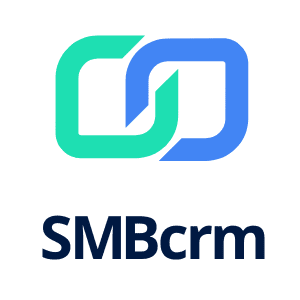
The dog training profession has seen a significant boom in recent years, with more dog owners searching for help in training their furry friends. As the demand for dog trainers increases, so does the need for effective marketing strategies that can help them to stay afloat and thrive in an increasingly competitive landscape. One option that has become indispensable for businesses across various industries is digital marketing, which strives to propel companies, organizations, and independent professionals into the digital space where their respective target market frequents.
Google Ads, previously known as Google AdWords, is one such powerful digital marketing tool that allows businesses, including dog trainers, to showcase their services and attract new clients. In this article, we’ll dive into the world of Google Ads for dog trainers and provide an overview of its various features, benefits, and strategies for ensuring a successful and profitable campaign.
Google Ads is an online advertising platform developed by Google, allowing advertisers to create and publish paid ads that appear on the top of the search engine results page (SERP), above the organic (non-paid) search results. Google Ads are designed to reach potential clients as they actively search for the offered services, providing an unmatched opportunity for targeted marketing and increased visibility.
Some of the most significant benefits of using Google Ads for dog trainers include:
Now that we’ve emphasized the importance of Google Ads for dog trainers let’s explore how to set up a successful campaign.
As with any marketing campaign, optimizing your keyword strategy is critical for success with Google Ads. Begin by researching keywords that are both relevant to your market and have a high search volume. Tools like Google’s Keyword Planner can help you identify popular and suitable search terms that potential clients will likely use.
Your ad copy is the cornerstone of your Google Ads campaign. It should be informative, concise, and compelling—enticing users to click on the ad and learn more about your services. Familiarize yourself with Google’s ad copy guidelines and strive to create strong headlines, descriptive lines, and clear calls-to-actions (CTAs).
Successful advertising with Google Ads hinges on effective targeting, ensuring that your ads are seen by the right people who are most likely to become customers. By mastering the different targeting methods, you’ll be better equipped to create strategic campaigns aimed at reaching your core demographics.
With Google Ads, you can choose to target specific geographic locations, like a particular city, region, or even a defined radius around your business’s physical address. This way, you can narrow down your audience to those who are most likely to patronize a dog trainer within their vicinity.
Another vital aspect of targeting is narrowing down your audience based on demographic factors like age, gender, household income, and parental status. By understanding your market and tailoring your ads to target specific demographic groups, you can increase the likelihood of reaching users who may actually require dog training services.
Google Ads allows you to target users based on their interests, search behavior, and online activities. By understanding your market niche and the characteristics of your ideal customers, you can harness this information to reach a more targeted audience interested in your dog training services.
Finding the appropriate budget for your Google Ads campaign can be a challenging but vital step for success. Analyze the average cost-per-click (CPC) for your targeted keywords and focus on finding a balance between spending on ads that provide a meaningful return on investment (ROI) while staying within your budgetary constraints. You can learn more on budget optimization from our article on lead capture strategy.
Effective bidding strategies allow you to maximize your ad’s visibility while minimizing unnecessary expenses. Google Ads provides various bidding options, including manual CPC and automated strategies like enhanced CPC, target CPA, and target ROAS. Experiment with different bidding options and evaluate what works best for your specific goals and resources.
As discussed earlier, Google Analytics is a valuable resource for tracking, evaluating, and optimizing your Google Ads campaign. By regularly monitoring your metrics, including impressions, clicks, click-through rate (CTR), and cost per conversion, you can make an informed decision on how to adjust your strategies and improve your overall performance.
It’s vital to pay attention to key metrics in Google Ads, like impressions, clicks, CTR, conversions, and cost per conversion. This data can provide you with valuable insights into the effectiveness of your campaign and areas in which it may need improvement.
To ensure continuous improvement of your Google Ads campaign, regularly evaluate your ads’ performance and modify your strategies accordingly. Some suggestions for this include:
In conclusion, Google Ads for dog trainers presents an unparalleled opportunity to target potential clientsactively searching for related services. With strategic keyword research, well-crafted ad copy, and meticulous targeting, dog trainers can leverage the power of the digital world to unlock new client potential.
The article has explored the ins and outs of Google Ads for dog trainers, guiding you through the process of setting up, optimizing, and continuously improving your ad campaigns. We hope that this serves as an encouragement and motivation to invest your resources into exploring Google Ads, as well-rounded and targeted digital marketing efforts will invariably lead to maximized canine success.
Q: What is Google Ads?
A: Google Ads is an online advertising platform developed by Google that allows advertisers to create and publish paid ads displayed on the top of the search engine results page (SERP), above the organic (non-paid) search results.
Q: What are the benefits of using Google Ads for dog trainers?
A: The main benefits include increased visibility, targeted marketing, and robust tracking and analytics, helping dog trainers reach potential clients actively searching for dog training services.
Q: How can dog trainers optimize their Google Ads campaign?
A: Optimizing a campaign involves researching relevant keywords, crafting compelling ad copy, targeting the right audience based on geographic, demographic, and interest factors, and monitoring ad performance with Google Analytics to continually improve strategies.
Q: What are some tips for creating compelling ad copy?
A: Some suggestions include creating strong headlines, writing descriptive and engaging ad text, and including clear calls-to-action (CTAs) while adhering to Google’s ad copy guidelines.
Q: What should dog trainers focus on when monitoring their Google Ads performance?
A: Key metrics to track include impressions, clicks, click-through rate (CTR), conversions, and cost per conversion. These metrics provide valuable insights into ad performance and areas for improvement.

We are thrilled to announce that Leads 365 is evolving!
Soon, we'll be embracing a new identity as SMBcrm.com, reflecting our commitment to providing tailored CRM solutions for small and medium-sized businesses.